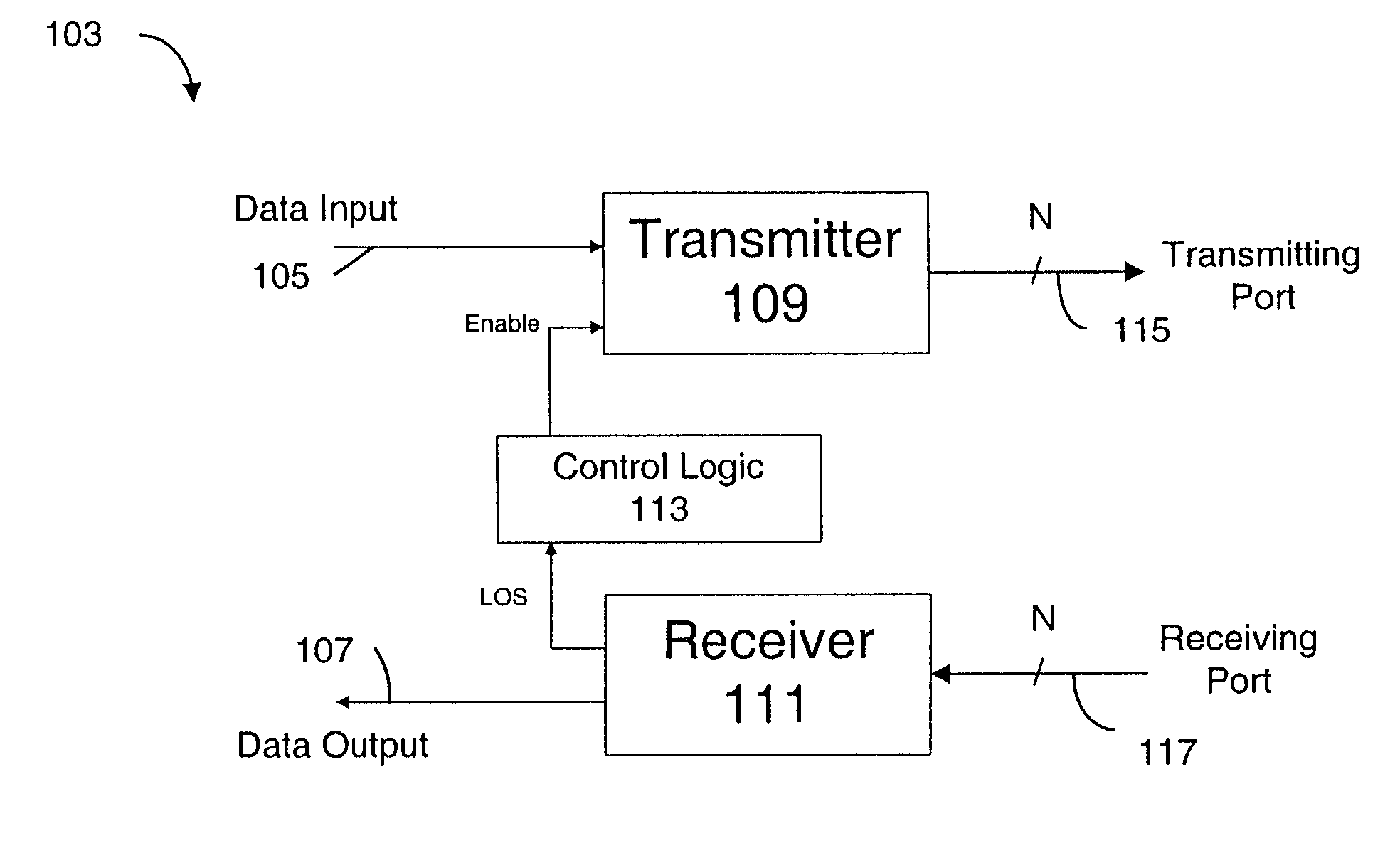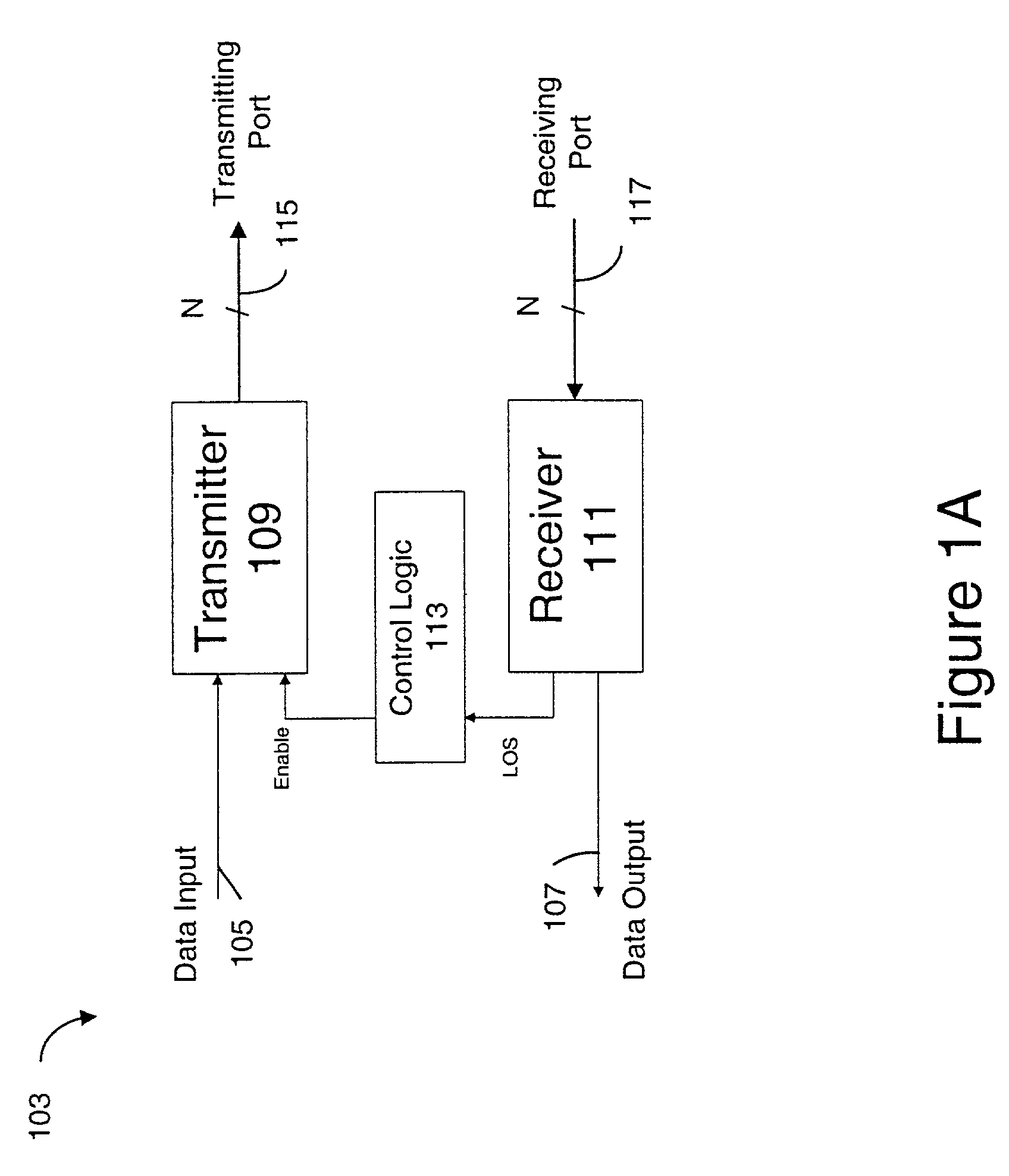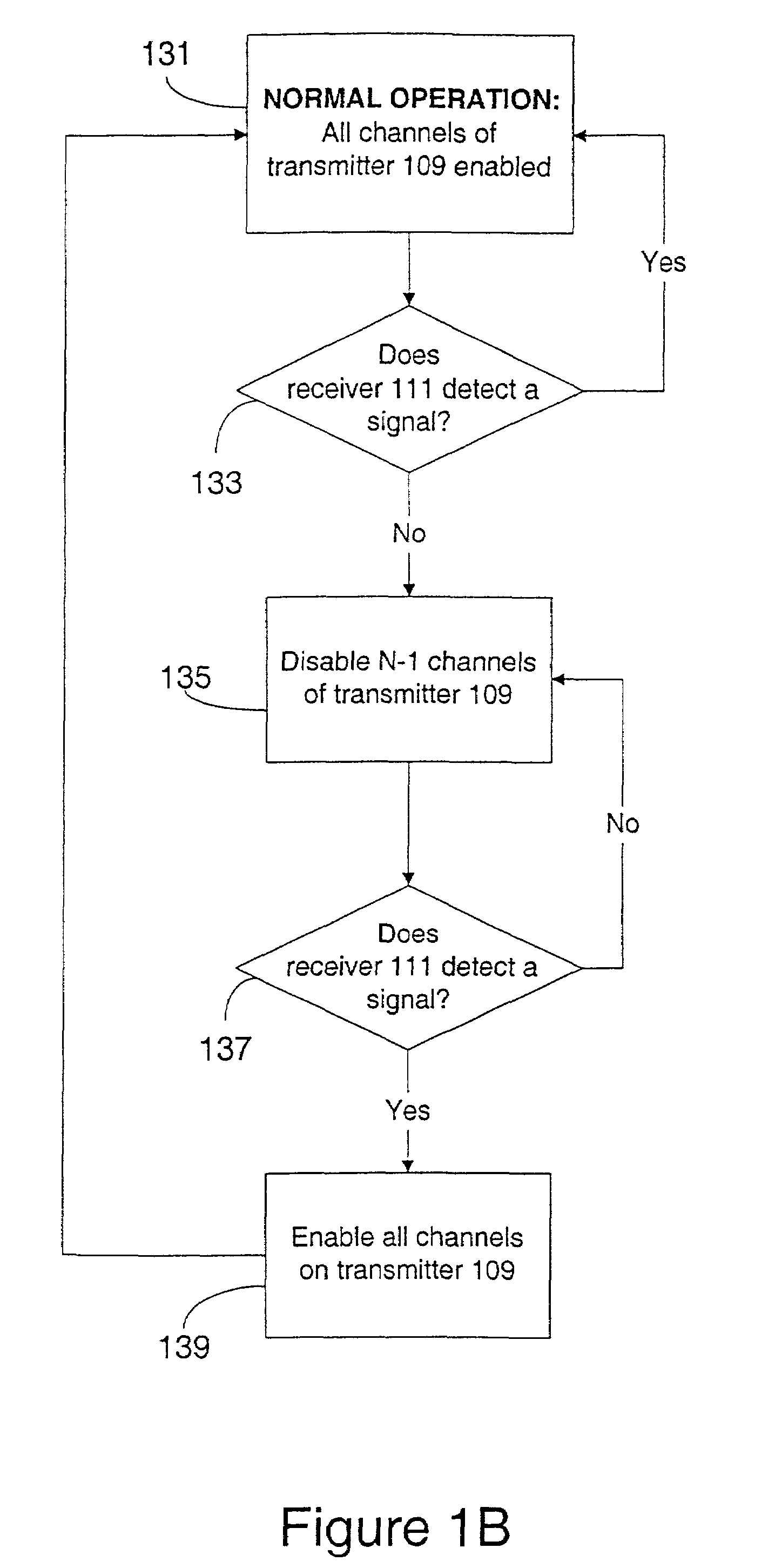Open fiber control for optical transceivers
a technology of optical transceivers and fiber control, applied in the field of optical transceivers, can solve the problems of limiting the usefulness of multi-channel optical transceivers, reducing the power of signals, and the total power transmitted still cannot exceed the eye-safety limits, so as to achieve the effect of increasing the data rate, preserving eye safety, and increasing optical power
- Summary
- Abstract
- Description
- Claims
- Application Information
AI Technical Summary
Benefits of technology
Problems solved by technology
Method used
Image
Examples
Embodiment Construction
[0017]FIG. 1A is a block diagram showing a preferred embodiment of the present invention. Optical transceiver 103 has a data input 105, a data output 107, a transmitter 109, a receiver 111, and control logic 113. Transmitter 109 transmits N channels at transmitting port 115. Receiver 111 receives N channels at receiving port 117 and determines whether a signal is present. When receiver 111 detects a signal, optical transceiver 103 is properly connected. When no signal is detected, an open fiber exists. Receiver 111 indicates to control logic 113 whether a signal is present by asserting or de-asserting a Loss of Signal (LOS) control line. Control logic 113 enables or disables N−1 channels of transmitter 109 with an Enable control line.
[0018]FIG. 1B is a flow chart describing OFC in optical transceiver 103, according to the present invention. During normal operation in step 131, the optical transceiver 103 has an intact connection to an optical network, and all N channels of transmitt...
PUM
 Login to View More
Login to View More Abstract
Description
Claims
Application Information
 Login to View More
Login to View More - R&D
- Intellectual Property
- Life Sciences
- Materials
- Tech Scout
- Unparalleled Data Quality
- Higher Quality Content
- 60% Fewer Hallucinations
Browse by: Latest US Patents, China's latest patents, Technical Efficacy Thesaurus, Application Domain, Technology Topic, Popular Technical Reports.
© 2025 PatSnap. All rights reserved.Legal|Privacy policy|Modern Slavery Act Transparency Statement|Sitemap|About US| Contact US: help@patsnap.com



